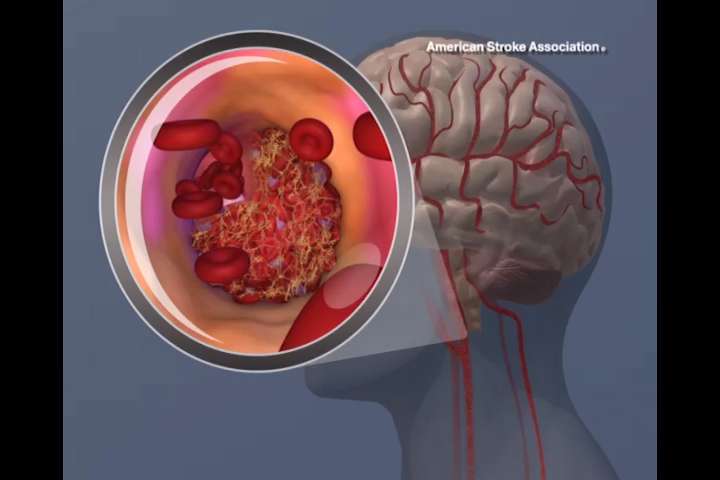A blood clot forming in the carotid artery. Credit: American Heart Association
Intracerebral hemorrhage is a type of stroke characterized by the rupture of a blood vessel within the brain. When the brain is exposed to blood, local immune cells become activated, triggering inflammation that promotes ongoing injury in the days and weeks after the initial stroke event.
This month in the JCI, work from Laura Sansing's lab at Yale School of Medicine examined the pathways in the brain that drive injury-producing inflammation. They identified a signaling protein that plays a pivotal role in activating immune system-mediated damage after intracerebral hemorrhage. In a mouse model, they observed that intracerebral hemorrhage-driven inflammation began to clear up at the same time as the TGF-β1 pathway was activated in local immune cells.
Treating mice with TGF-β1 immediately after the initial injury reduced pro-inflammatory signals and improved motor function compared to untreated mice. In a patient population, they also observed that higher bloodstream levels of TGF-β1 in the first 3 days following intracerebral hemorrhage predicted better outcomes 3 months into recovery.
Together, these results suggest that targeting the TGF-β1 pathway may have protective effects in individuals recovering from stroke and brain injury.
More information: Roslyn A. Taylor et al, TGF-β1 modulates microglial phenotype and promotes recovery after intracerebral hemorrhage, Journal of Clinical Investigation (2016). DOI: 10.1172/JCI88647
Journal information: Journal of Clinical Investigation
Provided by JCI Journals






















